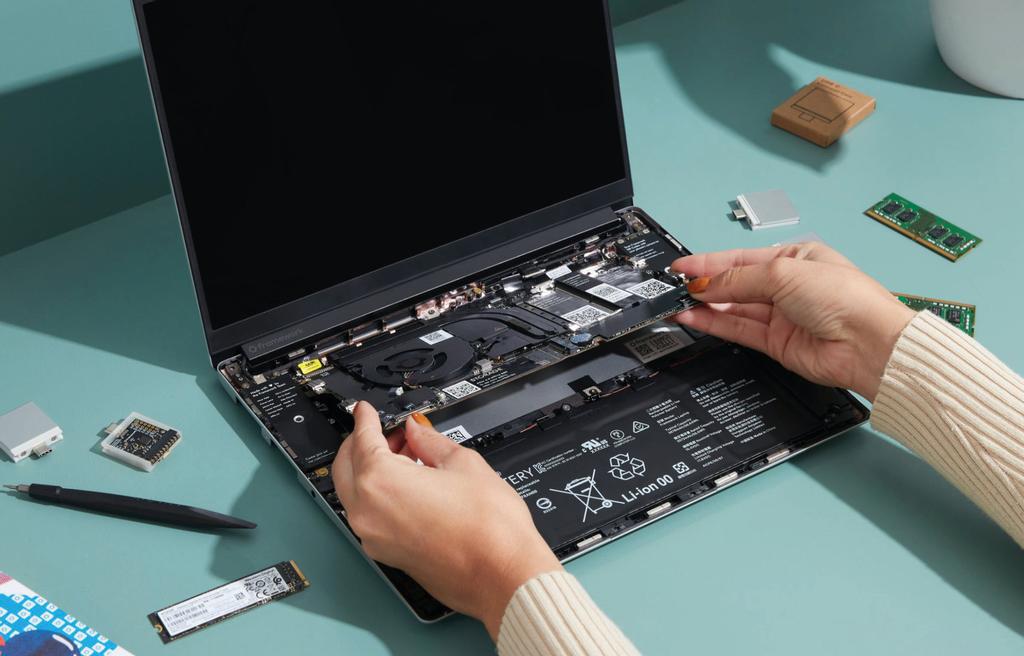In today’s digital age, laptops have become an essential tool for both work and leisure. However, when these trusty devices start showing signs of wear and tear, it can be a frustrating experience. But fear not! With the right tools and techniques, you can tackle the most common laptop issues and save yourself a trip to the repair shop.
In this article, we will guide you through the world of DIY laptop repair, equipping you with the knowledge and skills to troubleshoot and fix common problems. From replacing a broken screen to upgrading your RAM, we’ll cover it all.
With the help of the right tools, like screwdrivers, thermal paste, and anti-static gloves, and by following step-by-step instructions, you’ll be surprised at how easily you can breathe new life into your laptop. Not only will it save you money, but it will also give you a sense of accomplishment and empowerment.
So, if you’re ready to take matters into your own hands and become a DIY laptop repair expert, let’s dive in!
Benefits of DIY Laptop Repair
There are several benefits to taking on laptop repair yourself. Firstly, it can save you a significant amount of money. Repairing a laptop yourself means avoiding the high costs associated with professional repair services. Additionally, DIY repair allows you to have more control over the process and the quality of the repair. You can choose the exact components you want to use, ensuring that your laptop performs at its best. Lastly, DIY laptop repair can be a fulfilling and empowering experience. By successfully fixing your laptop, you gain a sense of accomplishment and a better understanding of how your device works.
Common laptop issues and troubleshooting techniques
Laptops can encounter a variety of problems, ranging from software issues to hardware malfunctions. One of the most common problems is a slow or unresponsive laptop. This can be caused by a variety of factors, such as an overloaded hard drive or a lack of available memory. By using simple troubleshooting techniques, such as clearing temporary files and optimizing startup programs, you can often improve the performance of your laptop.
Another common issue is a laptop that won’t turn on. This can be caused by a faulty power adapter, a drained battery, or a hardware problem. By checking the power adapter, testing the battery, and inspecting the internal components, you can often diagnose and fix the problem yourself.
Essential tools for DIY laptop repair
To successfully repair your laptop, you’ll need a few essential tools. The first tool you’ll need is a set of precision screwdrivers. Laptops are often held together with small screws, and having the right screwdriver will make disassembly and reassembly much easier. Additionally, you’ll need thermal paste, which is used to ensure proper heat transfer between the CPU and its heat sink. Antistatic gloves are also essential to protect your laptop from electrostatic discharge, which can damage sensitive components.
Step-by-step guide to replacing laptop components (RAM, hard drive, etc.)
Replacing laptop components may seem daunting, but with a little guidance, it can be a straightforward process. One component that is commonly upgraded is the RAM. By increasing the amount of RAM in your laptop, you can improve its multitasking capabilities and overall performance. To replace the RAM, you’ll need to locate the RAM slot, remove the old module, and insert the new one. It’s important to ensure that the new RAM module is compatible with your laptop’s specifications.
Another component that can easily be replaced is the hard drive. Upgrading to a solid-state drive (SSD) can significantly improve your laptop’s speed and responsiveness. To replace the hard drive, you’ll need to remove the old drive, connect the new drive, and reinstall the operating system. It’s important to back up your data before replacing the hard drive to avoid any loss.
Cleaning and maintenance tips for laptops
Regular cleaning and maintenance can help prolong the life of your laptop and prevent issues from arising. Dust and debris can accumulate inside the laptop, causing overheating and performance problems. To clean your laptop, use compressed air to blow out any dust from the vents and fans. Additionally, regularly clean the keyboard and screen using a soft, lint-free cloth and a mild cleaning solution.
Safety precautions for DIY laptop repair
When working on your laptop, it’s important to take safety precautions to avoid damaging the device or harming yourself. Always ensure that the laptop is turned off and disconnected from the power source before beginning any repairs. Additionally, wear antistatic gloves to prevent electrostatic discharge. When handling small components, work on a static-free surface, such as an antistatic mat. Finally, follow step-by-step instructions carefully and avoid using excessive force when removing or installing components.
Resources and online communities for DIY laptop repair enthusiasts
If you’re interested in learning more about DIY laptop repair, there are several online resources and communities that can provide valuable information and support. Websites such as iFixit offer step-by-step repair guides and tutorials for a wide range of laptop models. Online forums and communities, such as Reddit’s r/techsupport and r/laptops, are also great places to ask questions and seek advice from experienced DIY laptop repair enthusiasts.
When to seek professional help for laptop repair
While many laptop issues can be resolved through DIY repair, there are certain situations where it’s best to seek professional help. If you’re not confident in your abilities or if the issue is complex, it’s best to leave it to the experts. Additionally, if your laptop is still under warranty, attempting repairs yourself may void the warranty. In these cases, it’s best to contact the manufacturer or a certified repair service to ensure that your laptop is repaired correctly and without any additional costs.
Conclusion: Empowering yourself through DIY laptop repair
Repairing your own laptop can be a rewarding and empowering experience. By equipping yourself with the right tools, following step-by-step instructions, and taking necessary safety precautions, you can tackle common laptop issues and save yourself time and money. Whether it’s upgrading components or troubleshooting software problems, DIY laptop repair allows you to have more control over your device and gain a better understanding of how it works. So, don’t be afraid to dive in and become a DIY laptop repair expert. Your laptop will thank you, and you’ll feel a sense of accomplishment and empowerment.
No Novo Button? No Problem! Learn How to Factory Reset Your Lenovo Laptop with Ease




